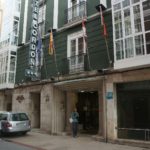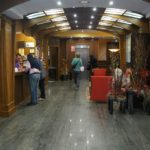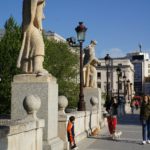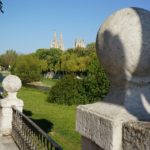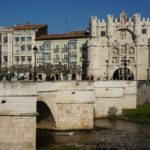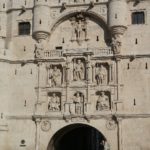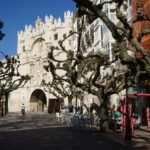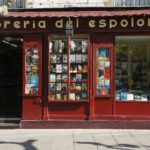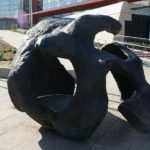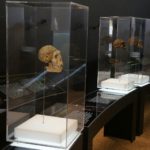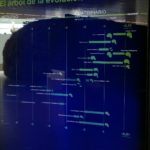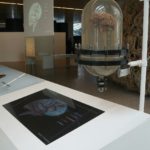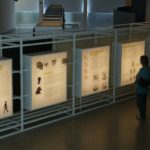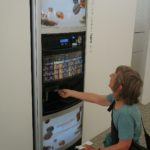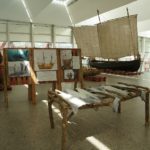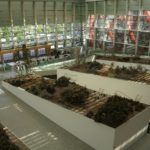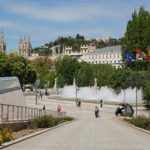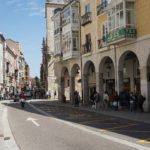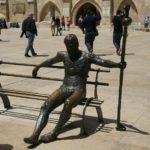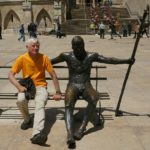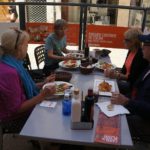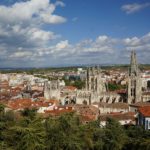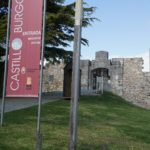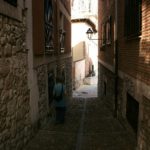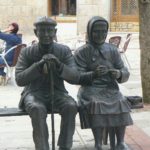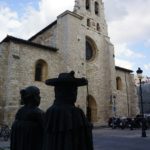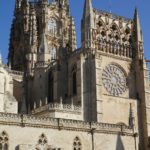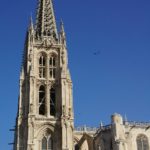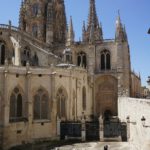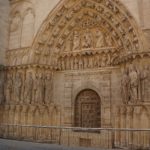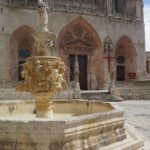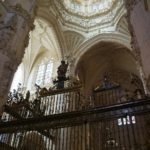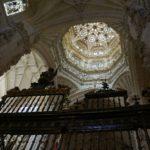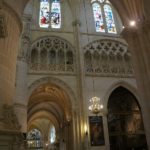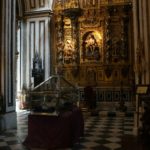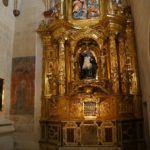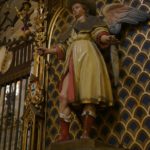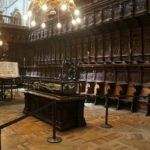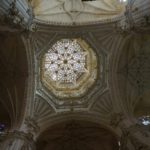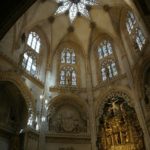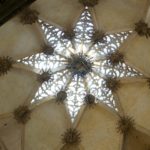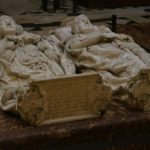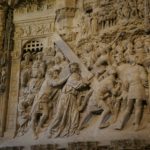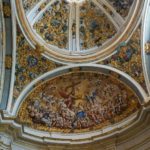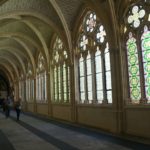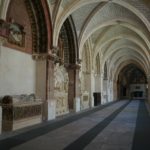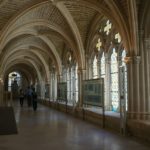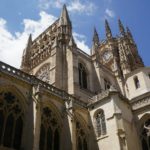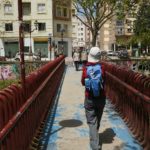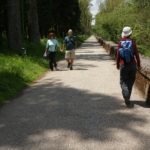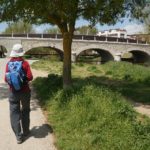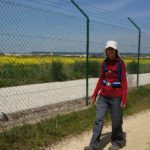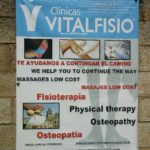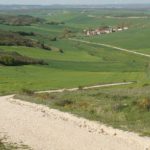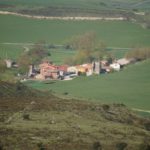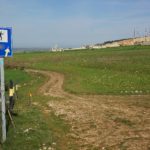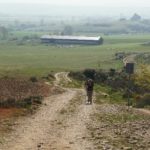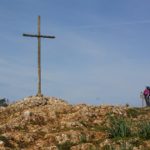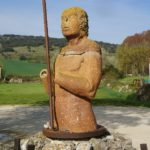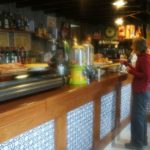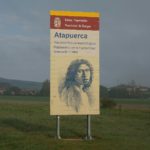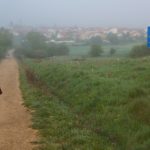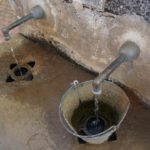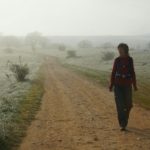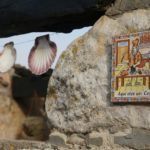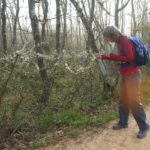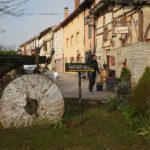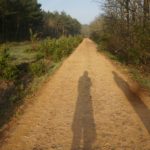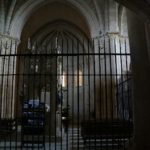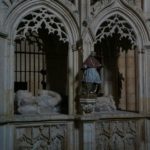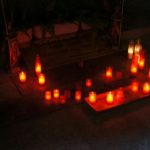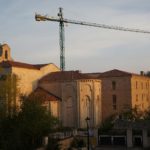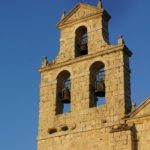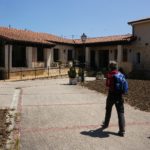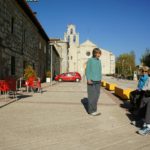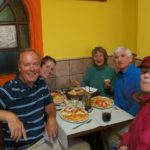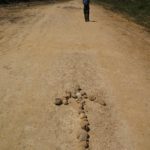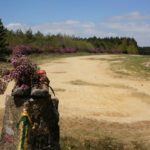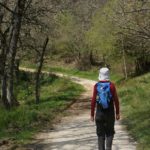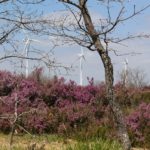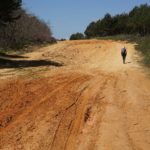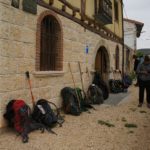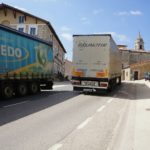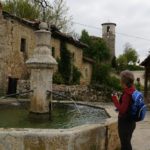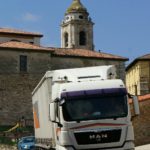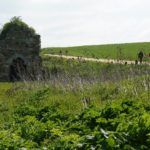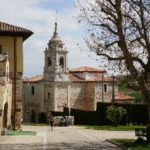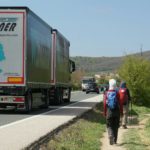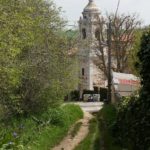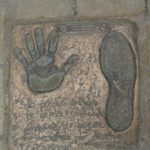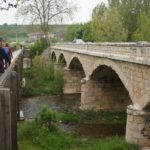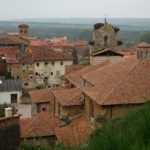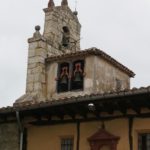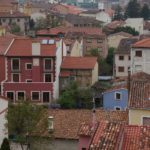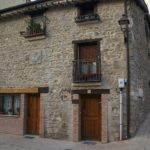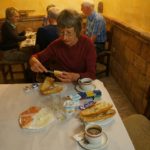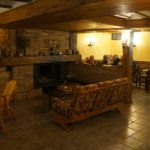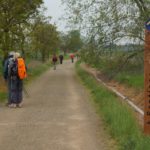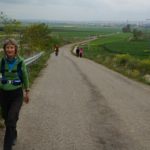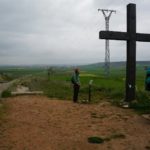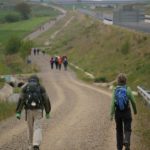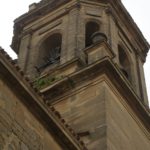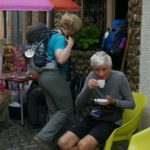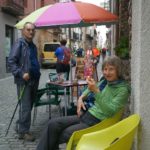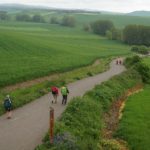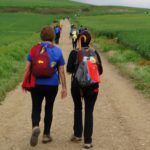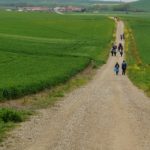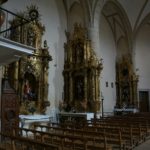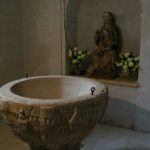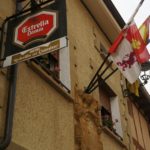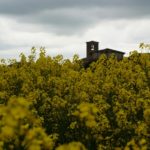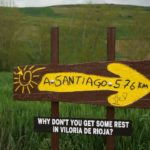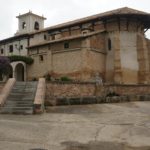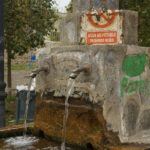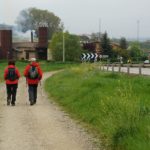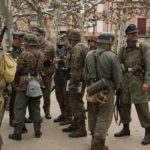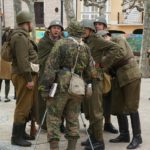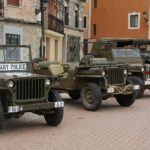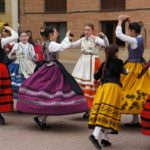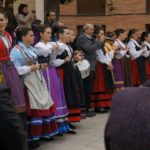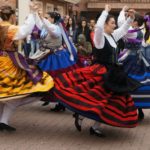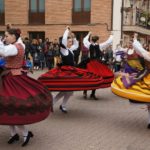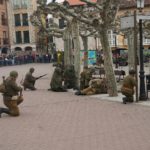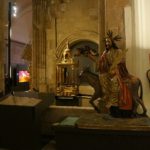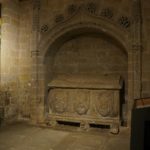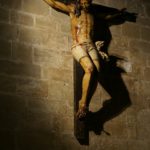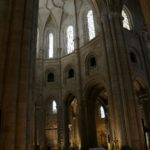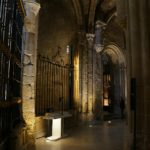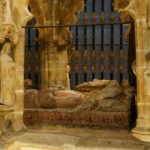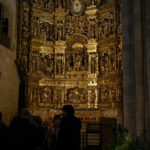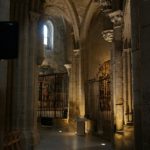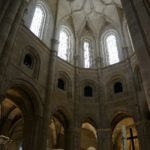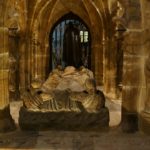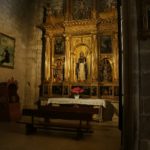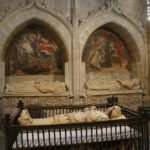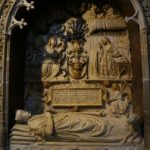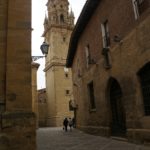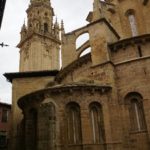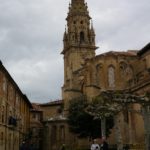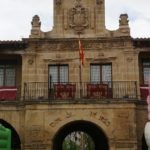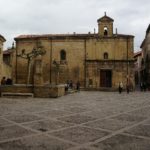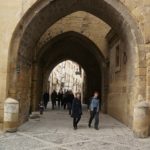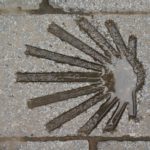Two updates to yesterday’s post.
First. We learnt from our friends Carolyn and John that the singing Spaniards were a walking group. Each Sunday they go out by bus and get dropped off to do a section of the Camino. At the end of the day they get picked up and go home. No wonder they had so much energy.
Second. The military re-enactment might have related to the Spanish Civil War. Although the Pact of Silence or Forgetting, el pacto de olvido, attempts to suppress the painful memories of the war and the Franco dictatorship when bloody atrocities were carried out by both sides.
Today, deep in a forest of oaks, we came to Monumento de Los Caidos, a concrete obelisk that marks the spot of the shallow grave of some of those who had been summarily executed in the war. The grave was only found in 2011 when some upgrading work was being done on the Camino track. Prior to that the victims were just “missing”.
This morning as we left Belorado over yet another multi-arched bridge it was crisp and cool. The conditions we love the most. The track was was wide, flat, smooth, in the open countryside and followed the same main road as yesterday. Today the road was busy and there seemed to be a large truck about every twenty seconds. At the small village of Villafranca Montes de Orca (pop 200) we had to walk on the narrow shoulder. When you have been walking for many days the speed of the traffic is terrifying. Atypically the road goes through the village – there is a truck stop at the entry. I don’t know how the speeding trucks get through the narrow street without hitting something, or each other.
From the village we left the road, thank goodness, and had a steep, hot 400m vertical climb through an oak forest. This was lovely as we hadn’t walked in forest for ages. At the summit it changed to a pine forest with an edge of heather and broom . We could have had a pleasant walk through more forest, but we didn’t. For three hours we trudged across a plateau on a wide clay forestry road out in the open. A broad swathe of trees had been felled on both sides of the trail, so no shade. On the plateau we again came across a line of wind turbines. Spain has the third highest number of wind turbines in the world, after the USA and China. Not bad for a country with a much smaller population.
A quick descent into a tranquil, remote valley far from the road. San Juan de Ortega has a population of 20 and is probably too small to be called a village. There is a church, a large monastery, 1 hotel, 1 hostel and 1 cafe. All owned by 1 person. There is a large tower crane adjacent the monastery which indicates some restoration work is going on.
The path we walked was the Montes de Oca. Montes indicates a hilly, desolate, scrubby wasteland. In medieval times this was a dangerous place for pilgrims with bandits, wild animals and no distinguishing geographical features to show the way. San Juan was a disciple of Santo Domingo (see previous post) and chose the dangerous wastes of Montes de Orca as his mission. He built a road, bridges, a church and monastery. He took the name Ortega from the Latin word for thistle.
114 miracles attributed to San Juan are recorded in the monastery, including:
Irish pilgrims were praying for their dead 7 year old child and laid some apples on the tomb. The child asked for one.
A french pilgrim whose twisted feet could barely drag him along, and whose arms were so deformed he could not feed himself, was cured here.
A deformed pilgrim entered on crutches and vowed not to leave until he was well. His friends could hear the sound his nerves made stretching.
At the cafe we had a very convivial meal tonight. Thirteen of us were in a small room all best friends after walking together for 10 days. 1 from Ireland, 2 from USA, 2 from NZ, 3 from Australia and 5 from northern England. Some were finishing in Burgos tomorrow and much vino flowed and a good time was had by all.
The hotel does not serve breakfast so the hotel owner has an arrangement with himself as the cafe owner to provide a picnic breakfast for the guests. In a shopping bag we each got a bottle of juice, a bottle of water, a croissant, a ham and cheese sandwich, an apple and an orange. There was the temptation to eat this for supper but we resisted and waited until morning and had it wit Nescafe coffee from a machine. Thank you George Clooney.

